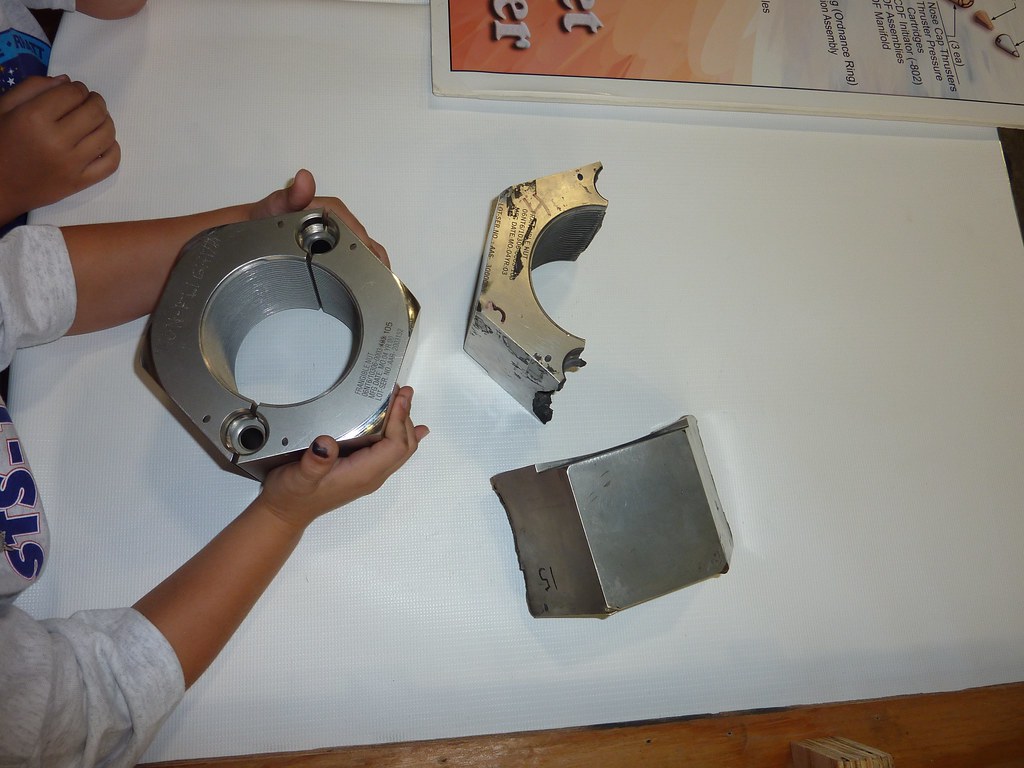GregGleason
Well-Known Member
- Joined
- Nov 13, 2009
- Messages
- 4,674
- Reaction score
- 45
The shuttle was anchored to the Mobile Launcher Platform by eight bolts attached to the base of the SRM's. The aft skirt of each SRM had four attach points where there were bolted to the platform. As the SRM's were ignited, small charges (NASA standard detonators or NSD's) would fire to break frangible nuts that held the bolt. The nuts would fragment, allowing the bolt to fall out of the aft skirt. On high-speed shuttle launch imagery, you can see puffs of smoke emit from the hold down points as the NSD's are fired, and momemts later (in high-speed time) you see flame from the SRM's and first motion. I have read were shuttle astronauts were given the remains of the nuts as souvenirs.

Frangible Nut by JetForMe, on Flickr
Greg
Ref. https://spaceflight.nasa.gov/shuttle/reference/shutref/srb/posts.html
Each solid rocket booster has four hold- down posts that fit into corresponding support posts on the mobile launcher platform. Hold- down bolts hold the SRB and launcher platform posts together. Each bolt has a nut at each end, but only the top nut is frangible. The top nut contains two NASA standard detonators, which are ignited at solid rocket motor ignition commands.
When the two NSDs are ignited at each hold-down, the hold-down bolt travels downward because of the release of tension in the bolt (pretensioned before launch), NSD gas pressure and gravity. The bolt is stopped by the stud deceleration stand, which contains sand. The SRB bolt is 28 inches long and is 3.5 inches in diameter. The frangible nut is captured in a blast container.

Frangible Nut by JetForMe, on Flickr
Greg
Ref. https://spaceflight.nasa.gov/shuttle/reference/shutref/srb/posts.html









